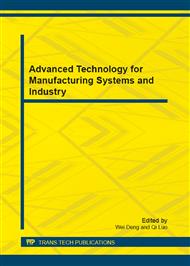[1]
Y. Cao: MOSFET Modeling for 45nm and beyond, IEEE ACM international conference on Computer-aided design, Proceedings of the 2007 IEEE, pp.638-643.
DOI: 10.1109/iccad.2007.4397337
Google Scholar
[2]
Ke-Wei Su, Yi-Ming Sheu, Chung-Kai Lin, et al.: A Scaleable Model for STI Mechanical Stress effect on Layout Dependence of MOS Electrical Characteristics, Custom Integrated Circuits Conference (2003), pp.245-248.
DOI: 10.1109/cicc.2003.1249396
Google Scholar
[3]
Y.M. Sheu, K. W. Su, S.J. Yang, et al.: Modeling the Well-Edge Proximity Effect in Highly Scaled MOSFETs, IEEE Custom Integrated Circuits Conference (2005), p.831–834.
DOI: 10.1109/cicc.2005.1568798
Google Scholar
[4]
C. M. Hu, et al., in: BSIM4. 3. 0 MOSFET Model- User's Manual (2003).
Google Scholar
[5]
X. Li, W. Wu, and D.B.M. Klaassen, in: PSP 102. 3(2008).
Google Scholar
[6]
Liebmann R, Nawaz N, Bach K H, et al.: Efficient 2D approximation for Layout-dependence Relaxation of Etch Stop Liner Stress due to Contact Holes, SISPAD (2006), pp.173-175.
DOI: 10.1109/sispad.2006.282866
Google Scholar
[7]
E. Morifuji, H. Aikawa and H. Yoshimura, et al.: Layout Dependence Modeling for 45-nm CMOS with Stress-Enhanced Technique, Vol. 56, No. 9 (2009), p.1991 – (1998).
DOI: 10.1109/ted.2009.2026121
Google Scholar
[8]
H. Aikawa, E. Morifuji,T. Sanuki T, et al.: Variability aware modeling and characterization in standard cell in 45 nm CMOS with stress enhancement technique, IEEE VLSI, 2008, pp.90-91.
DOI: 10.1109/vlsit.2008.4588574
Google Scholar
[9]
H. Tsuno,H. Anzai, M. Matsumura, et al.: Advanced analysis and modeling of MOSFET characteristic fluctuation caused by layout variation, IEEE VLSI, 2007, pp.204-205.
DOI: 10.1109/vlsit.2007.4339693
Google Scholar
[10]
A.J. Scholten, G.D.J. Smit, and B.A. De Vries, et. al: The New CMC Standard Compact MOS Model PSP: advantages for RF applications, Solid-State Circuits, Vol. 44, Issue 5(2009), pp.1415-1424.
DOI: 10.1109/jssc.2009.2015821
Google Scholar
[11]
A. Lachtefeld and D.A. Antoniadis: Invertigating the Relationship between Electron Mobility and Velocity in Deeply Scaled NMOS via Mechanical Stress, IEEE Electron Device Letters , Vol. 22, No. 12(2001), pp.591-593.
DOI: 10.1109/55.974587
Google Scholar
[12]
H. Park K.S. Jones J.A. Slinkmnn and M.E. Law, 'The Effects of Strain on Dopant Diffusion in Silicon, IEEE IEDM 1993, pp.303-306.
Google Scholar


